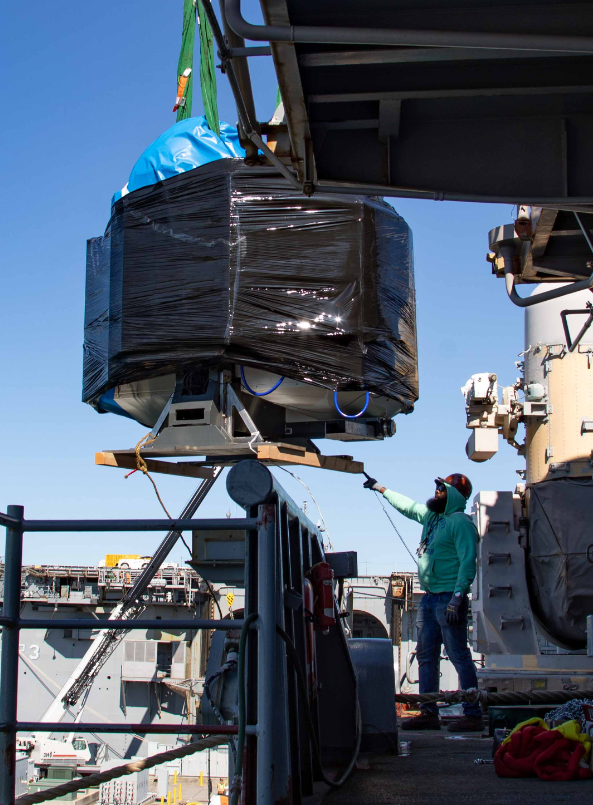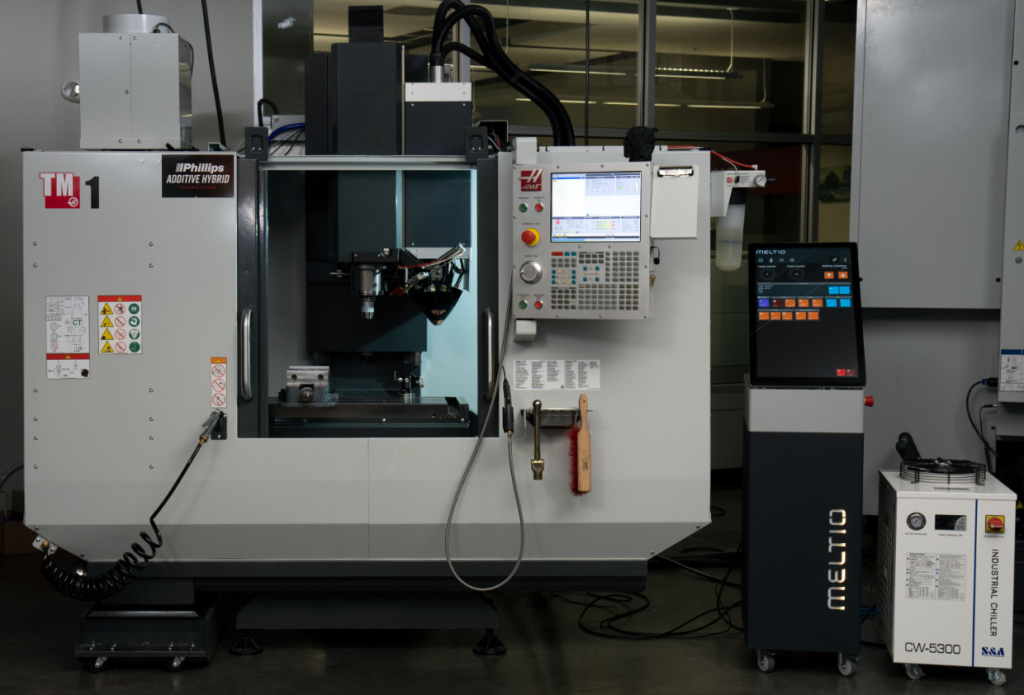US Navy has installed its first Phillips Additive Hybrid metal 3D printing solution on board powered by metal 3D printer developer Meltio and Haas.
The Phillips Additive Hybrid powered by Haas incorporated Meltio’s laser metal deposition technology with the Haas CNC vertical machining centers which regulate the mill onboard the USS Bataan ship. Rear Adm. Brendan McLane, the Commander, of Naval Surface Force Atlantic, said, “The introduction of additive manufacturing (AM) into naval operations supports readiness and self-sufficiency.”

How is the US Navy benefitting from this partnership?
This new project is a step closer to illustrating an industrial-scale useful application in the maritime sector, thanks to Meltio’s accessible wire-laser metal 3D printing technology. Meltio has worked with Haas on other hybrid system projects in various sectors and countries. The Hybrid system is capable of both additive and subtractive manufacturing. The US Navy is combining these technologies in this project for the USS Bataan ship.
The Phillips Additive Hybrid system, which incorporates a Meltio wire-laser metal deposition head on a Haas TM-1 computer numerical control mill, was installed as part of a collaborative initiative between both the Commander, the Naval Surface Force Atlantic, and Naval Sea Systems Command (NAVSEA) Technology Office. The Haas TM-1 framework has demonstrated its reliability in afloat environments aboard numerous aircraft carriers. When combined with the Haas TM-1, the Meltio deposition head offers both additive and subtractive manufacturing capabilities within one system, boosting efficiency and lowering waste when compared to conventional machining.
By permanently implementing the first metal 3D printer onboard a ship, the US Navy enhanced efforts to increase self-sufficiency for equipped ships and crews and decrease supply chain timeframes by harnessing additive manufacturing. Engineers will use additive manufacturing to integrate multiple materials to produce components from 3D model data, typically layer upon layer, as compared to subtractive and formative manufacturing methodologies.
The Phillips Additive Hybrid system prints 316L stainless steel, which is commonly used in US Navy ship systems. Although stainless steel additive manufacturing onboard naval ships is recent, it represents a significant step forward in offering mariners with industrial-level manufacturing functionalities to print individual components for systems that were previously unavailable without purchasing the overall system at a considerably higher cost.
The benefits of Meltio’s Engine 3D printing are twofold; it increases operational availability while decreasing demand on conventional and Navy-specific supply chains. Moreover, NAVSEA engineers implemented a second 3D printer onboard Bataan to create polymer (plastic) parts. This printer allows the ship’s crew to print any of the 300+ AM Technical Data Packages created by NAVSEA, which describe the necessary design configuration and processes to produce a component and guarantee it functions properly.
“These printers have the ability to help the Navy overcome both obsolescence issues for ships and systems that have service lives measured in decades and directly contribute to enhanced operational availability of our systems and ships,” said NAVSEA Chief Engineer Rear Adm. Jason Lloyd.

Defense sector benefitting from additive manufacturing
Recently, Fieldmade, a spin-off of the Norwegian Defence Research Establishment (FFI), and Mark3D UK announced a strategic alliance in which Mark3D UK will primarily deliver Fieldmade Nomad LW portable 3D printers in the UK. The announcement signifies a major shift in the supply, support, and servicing tactic for the Markforged-based Fieldmade Nomad LW range. Fieldmade CEO Jostein Olsen said, “Fieldmade AS are specialists in a number of primary areas, our products and services cover Digital Inventory Management, Consulting Services, and the Nomad range of in-field additive manufacturing equipment.” Furthermore, the British army employed in-field additive manufacturing for Project Convergence 22.
Previously, Australian large-scale metal 3D printing company AML3D, and BAE Systems, a British multinational arms company, announced a prototyping deal with BAE Systems Australia. The contract is anticipated to aid BAE Systems Australia‘s contract to manufacture nine Hunter class frigates by researching the viability and prototyping of parts. The prototype parts will help BAE Systems Australia accomplish its deal with the Australian Department of Defence to develop and construct nine Hunter class warships for the Royal Australian Navy.
What does the future of 3D printing for the next ten years hold?
What engineering challenges will need to be tackled in the additive manufacturing sector and beyond in the coming decade?
To stay up to date with the latest 3D printing news, don’t forget to subscribe to the 3D Printing Industry newsletter or follow us on Twitter, or like our page on Facebook.
While you’re here, why not subscribe to our Youtube channel? Featuring discussion, debriefs, video shorts, and webinar replays.
Are you looking for a job in the additive manufacturing industry? Visit 3D Printing Jobs for a selection of roles in the industry.
Feature image shows Phillips Additive Hybrid metal 3D printing solution. Image via Meltio.



